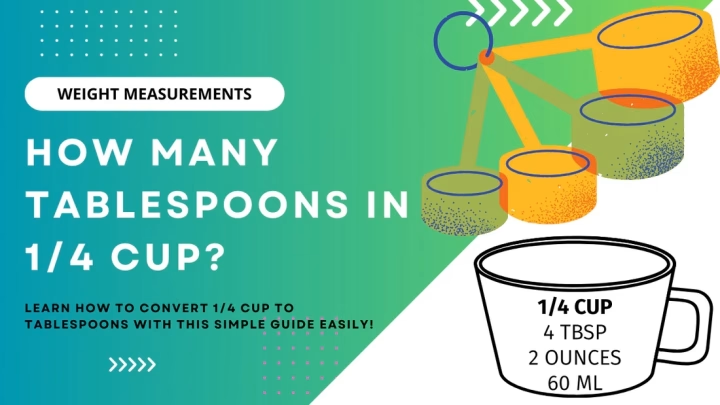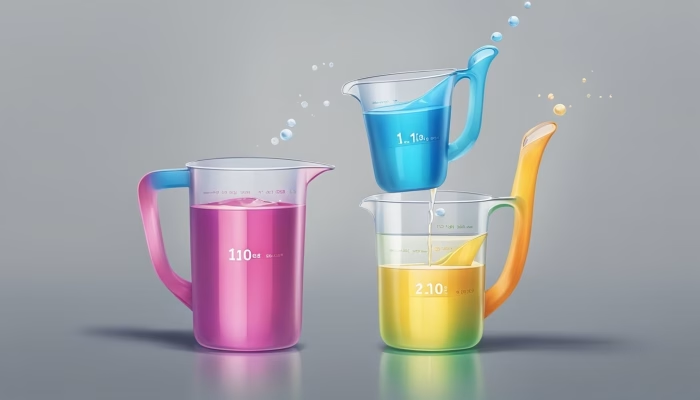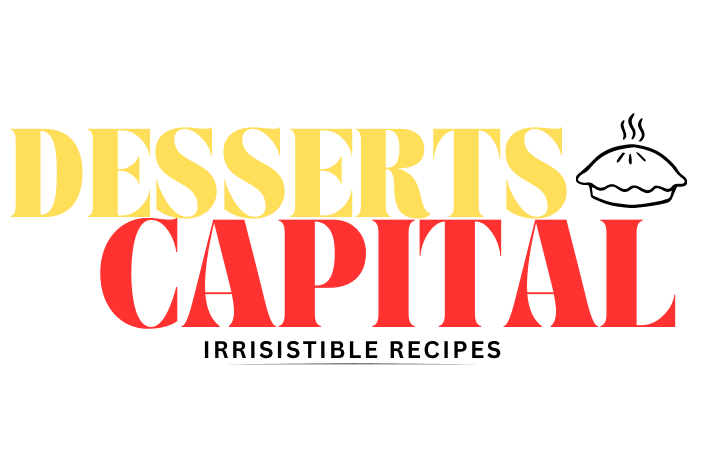In cooking and baking, measurement accuracy is essential for creating delicious dishes and baked goods. One frequently asked question, especially by beginners, is: how many 1/4 cups make 1/2 cup? Understanding how different measurements relate to each other can simplify cooking, help avoid errors, and save time. Let’s explore this question in detail and discuss practical tips for using measuring cups effectively.
Table of Contents
Understanding Basic Cup Measurements

In the United States, recipes commonly use cup measurements for ingredients, especially in baking. The four primary cup measurements you’ll find in most recipes are 1 cup, 1/2 cup, 1/3 cup, and 1/4 cup. Knowing how these measurements relate to each other can make it easier to scale recipes up or down, convert measurements, or substitute if you’re missing a specific measuring cup. You can easily solve complex math problems using this fraction calculator to add, subtract, multiply, and divide fractions quickly.
How Many 1/4 Cups Are in 1/2 Cup?
To answer the main question: two 1/4 cups make 1/2 cup.
This is because a 1/4 cup is exactly half of a 1/2 cup. So, when you use two 1/4 cup measurements, you end up with 1/2 cup. This can be represented as 0.25 + 0.25 = 0.5.
Basic Measurement Conversions
Understanding basic measurement conversions can be very useful:
- 1 Cup = 4 x 1/4 Cups
- 1/2 Cup = 2 x 1/4 Cups
- 1/3 Cup = 1 and 1/3 of a 1/4 Cup (or 1/4 cup plus a little extra)
- 1/4 Cup = 2 x 1/8 Cups
Knowing these conversions helps if you only have one type of measuring cup and need to make adjustments. For example, if a recipe calls for 1/2 cup and you only have a 1/4 cup, you’ll know that two scoops will give you the required measurement.
Why Accurate Measurements Are Crucial in Cooking and Baking
Accurate measurements are especially important in baking, which relies on precise ingredient ratios for texture, taste, and consistency. Misjudging quantities can lead to baked goods that are too dense, too dry, or fail to rise properly. Using correct measurements ensures your recipe turns out as intended and prevents the waste of time and ingredients.
Also Read: Calories in Pancakes
Practical Tips for Measuring Ingredients Correctly
Using measuring cups effectively requires a few simple techniques. Here are some practical tips to help ensure you measure ingredients accurately:
- Level Off Dry Ingredients
When measuring dry ingredients like flour, sugar, or cocoa powder, use the back of a knife or a flat edge to level off the top of the measuring cup. This prevents adding extra amounts unintentionally, which can affect your recipe. - Use the Correct Type of Measuring Cup
Use dry measuring cups (usually metal or plastic with a handle) for dry ingredients, and liquid measuring cups (glass or plastic with a spout and markings) for liquids. Liquid measuring cups make it easy to pour without spilling and help you measure to the correct line. - Spoon Flour into Measuring Cups
Instead of scooping flour directly from the bag, spoon it into the measuring cup and level it off. Scooping can compact the flour, resulting in too much for the recipe, which can affect the texture of baked goods. - Check Liquid Measurements at Eye Level
When measuring liquids, check at eye level to ensure accuracy. Looking from above or at an angle may cause you to over- or under-measure due to the curve of the cup.
Other Common Measurement Questions
People also often have similar questions about other measurements. Here are a few frequently asked ones:
- How Many 1/3 Cups Make a Cup?
Three 1/3 cups equal one cup. This is useful if you only have a 1/3 cup measure but need to make a full cup. - How Many 1/2 Cups in a Cup?
Two 1/2 cups make a full cup. This straightforward conversion is helpful when doubling or halving recipes. - How Many Teaspoons in a Tablespoon?
There are three teaspoons in one tablespoon. This conversion is often needed when adjusting the seasoning or spice levels in recipes.
Using Fractions to Make Measurements Easier
Knowing the decimal equivalents of common cup measurements can simplify mental math while cooking. Here’s a quick guide:
- 1/4 cup = 0.25
- 1/2 cup = 0.5
- 3/4 cup = 0.75
- 1 cup = 1.0
These decimal equivalents are handy for quickly calculating measurements, especially when you’re in the middle of cooking and don’t have time to look up conversions.
Practical Applications of Cup Conversions in Recipes

Understanding conversions, like knowing that two 1/4 cups equal 1/2 cup, is useful in many situations where you need to modify a recipe:
- Halving a Recipe
If a recipe calls for 1/2 cup of an ingredient and you’re halving the recipe, you’ll need only 1/4 cup. Proper conversions make reducing recipes straightforward. - Doubling a Recipe
Doubling ingredients can be tricky without the right measuring cups. For example, if a recipe calls for 1/2 cup, doubling it requires 1 cup. If you only have a 1/4 cup, you know that four scoops equal 1 cup. - Adapting to Different Measuring Tools
Sometimes, you may not have all measuring cups on hand. Knowing conversions allows you to make adjustments. For instance, if you only have a 1/4 cup, you’ll need two scoops to make 1/2 cup.
Common Kitchen Scenarios Where Conversion Knowledge Comes in Handy
There are countless times in the kitchen where knowing these measurements and conversions can save you time and prevent frustration:
- Running Low on Measuring Cups
If one of your measuring cups is in the dishwasher, knowing how to substitute sizes will keep you moving without delay. - Following Complex Recipes
Some recipes require unusual measurements. If you’re making a recipe that calls for 3/4 cup and only have a 1/4 cup, it’s helpful to know that you’ll need three scoops. - Precision in Baking
Baking often requires precise measurements for consistent results. Understanding conversions ensures that your ingredients are close to the recipe’s requirements, leading to more reliable results.
Quick Conversion Table for Easy Reference
Here’s a handy reference table for quick conversions in the kitchen:
| Measurement | Equivalent in 1/4 Cups |
| 1 Cup | 4 x 1/4 Cups |
| 3/4 Cup | 3 x 1/4 Cups |
| 1/2 Cup | 2 x 1/4 Cups |
| 1/4 Cup | 1 x 1/4 Cup |
Why Developing Measurement Knowledge Is Helpful for Home Cooks
For home cooks and bakers, understanding measurement conversions can make a big difference in kitchen success. It enables them to approach recipes with confidence, make necessary adjustments, and ensure their dishes turn out as planned.
Learning basic conversions, like how many 1/4 cups are in a 1/2 cup, is an important step toward becoming comfortable and flexible in the kitchen. With practice, these conversions will become second nature, making it easier to cook and bake with creativity and ease.

